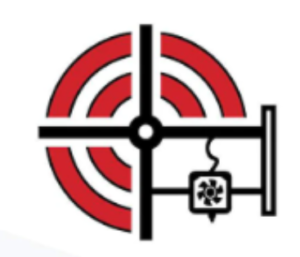The convergence of the Fourth and Fifth Industrial Revolutions, compounded by rising geopolitical pressures, calls for a more agile and resilient supply chain. In response, the Department of War (DoW) has prioritized modernization within metal casting and forging (C&F) sectors, longstanding cornerstones of defense manufacturing that produce critical components for missiles, aircraft, and ground systems.
Despite their strategic importance, both industries face persistent challenges: aging infrastructure, labor-intensive processes, and limited scalability – issues that are especially acute in low- to medium-volume production environments. This is where the integration of advanced manufacturing technologies into C&F facilities plays a key role.
“The casting industry has experienced significant consolidation and reduction, with many suppliers moving overseas or across borders,” said Randy Altmann, General Manager at MetalTek’s International Wisconsin Investcast Division. “This underscores the urgent need for modernization to maintain a resilient and agile defense supply chain.”
To meet this challenge, the National Center for Defense Manufacturing and Machining (NCDMM) joined forces with MetalTek — a leader in missile fin and component casting — to launch the Advanced Manufacturing Cell (AMC) to Transform Missile Fin and Component Production initiative. The project set out to modernize the entire investment casting process, improving performance at every step, from mold preparation and melting to finishing and inspection.
The initiative offers a compelling, forward-looking blueprint on how advanced manufacturing can revitalize foundries and the broader C&F sector. Aligned with DoW strategic priorities, the project expanded manufacturing capacity, strengthened supply chain resilience, and modernized the defense industrial base (DIB), ensuring more efficient, reliable production of critical legacy components that enhance military capability, deterrence, and national security.
“This is a comprehensive, multi-year, multi-phase initiative that has demonstrated a significant step toward enhancing domestic production capabilities while fortifying the supply chain for the Army and the broader defense industrial base,” said Litsa Rubino, Program Manager at NCDMM.
MetalTek’s advanced manufacturing cell drives automation
MetalTek’s AMC project focused on modernizing casting operations by implementing automated processes, advanced data collection, additive manufacturing processes, and process simulation techniques. These enhancements addressed systemic issues, significantly optimizing the production of missile fins and components.
“Not only does the industry have a pressing need to increase capacity, but current advancements in technology and automation also align perfectly with this goal,” said Jim Myers, Technical Director at MetalTek International. “It’s becoming easier and easier to automate low-volume production needs.”
Key innovations of the project:
- Automated and semi-automated processes: Upgrades spanned the entire casting workflow—from wax pattern and shell mold production to heat treatment and NDT—reducing labor intensity and increasing consistency.
- Additive Manufacturing processes and techniques: The increased use of additively manufactured process components, including part patterns, inspection tooling, and direct metal printing.
- Digital process optimization: The use of industrial data collection and simulation tools allowed for real-time monitoring, predictive maintenance, and continuous process improvement.
- Workforce enablement: The project included the development of digital training libraries and sensor-integrated systems to upskill operators and reduce onboarding time.
These enhancements yielded measurable improvements in quality, throughput, and lead times, while also reducing per-unit costs. For example, the project dramatically accelerated production and strengthened the workforce. Manufacturing lead time dropped from 26 days to 7.8 days (70% faster), and touch time fell 53% (5.8 to 2.7 hours), enabling record fins/month output.
“Our efforts reduced many laborious tasks during the shell mold process, like manually measuring parameters such as viscosity, temperature, and pH into an automated process,” Myers explained. “Now, operators can direct their attention to making informed decisions based on this data, rather than spending excessive time collecting it.”
Another critical component of the project was focusing on education and workforce development. By integrating technological advancements, the project significantly reduced manual labor and improved workforce engagement by 15%. This not only boosted employee morale but also increased confidence in future success by 21%, thereby reinforcing a strong, mission-focused culture.
“Automation has shifted roles from strenuous manual labor to higher-skilled, technician work,” Altmann said. “Instead of using their hands on a cut-off saw, employees now start up robots and operate joysticks, improving working conditions and elevating workforce skills.”
Strengthening the DIB
The implications of MetalTek’s AMC initiative extend far beyond a single facility. By demonstrating how advanced manufacturing can be successfully integrated into a legacy casting environment, the project offers a scalable model for other defense-critical suppliers.
Benefits to the DIB include:
- Increased surge capacity: Faster ramp-up times for new components improve readiness in times of crisis.
- Faster new part introduction: The more quickly the entire process can be developed for new system hardware production, the quicker and cheaper a newly designed system can go from prototype to LRIP to full production quantities, reducing the “valley of death” challenges to implementing new systems.
- Improved part performance: Reduced variation and enhanced inspection capabilities ensure mission-critical reliability.
- Resilient workforce: Digital tools and training systems help attract and retain skilled labor in a traditionally hands-on industry.
As the DoW continues to modernize its supply chain, the C&F industry must evolve in parallel. MetalTek’s AMC efforts are a powerful example of what’s possible when innovation meets mission. By embracing advanced manufacturing, the industry not only improves its own efficiency, but it also strengthens the very foundation of U.S. military readiness. These efforts collectively enhance the DoW’s operational capabilities and ensure that the U.S. warfighter has access to high-quality, reliable components necessary for mission success.
The AMC project is more than a factory upgrade; it’s a strategic investment in the future of U.S. defense manufacturing. By combining cutting-edge technology with workforce development, and new ways to integrate additive manufacturing and process innovation, the initiative delivers measurable improvements in cost, schedule, and performance. It also aligns with broader DoW objectives to modernize the industrial base, enhance military readiness, and ensure the nation’s defense supply chain is agile, resilient, and future-ready.
Featured image courtesy of MetalTek
Subscribe to Our Email Newsletter
Stay up-to-date on all the latest news from the 3D printing industry and receive information and offers from third party vendors.






